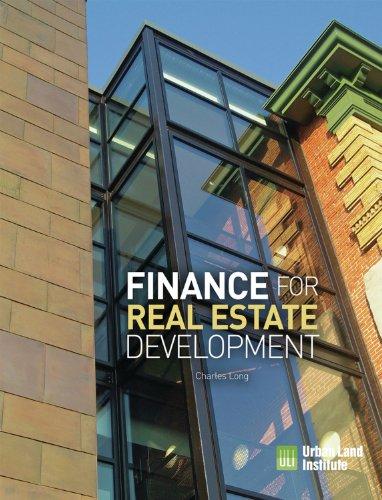Question
Capital Structure: In the third section of your report, discuss the capital structure of the corporation. A. Outline the most recent years debt, equity, and
Capital Structure: In the third section of your report, discuss the capital structure of the corporation. A. Outline the most recent years debt, equity, and total capital using the provided Excel template to show the overall capital structure of the corporation. Please note: to complete this, you will use the same template you used in support of Milestone One, but this time you will be completing the Capital Structure tab. B. Articulate the corporations dividend policy and what impact it has on the investors. C. Analyze the relationship between capital structure, cost of capital, and risk, using examples from your chosen organization. D. Explain how the relationship between capital structure, cost of capital, and risk can help inform decision making and maximize corporate value.
I am unsure how to fill out this spreadsheet using Apples 10-k report
| This tab is used to calculate Weighted Average Cost of Capital (WACC). Enter data in the yellow cells only. Comments to help you are indicated by a red triangle in the top right corner of cell; hover over the cell to review. | ||||||||||
| Apple Inc. | ||||||||||
| CAPITAL STRUCTURE | ||||||||||
| For End of Fiscal Year 2022 | ||||||||||
| Unaudited; Amounts USD x 1000 | ||||||||||
| SIMPLE METHOD | TEXTBOOK METHOD | |||||||||
| Capital Funding Amount | Cost of Capital: Estimated % Return Req'd by Investors | Corporate Marginal Tax Rate % | 1 - Corp Tax Rate | % Cost of Capital, After Tax Savings | $ Cost of Capital per Year (Column C x Coumn G) | Wgt x Cost | % of Total | |||
| Debt: Bank Loans | $ - | 0.0% | 20.0% | 80.0% | 0.0% | $ - | 0.0000% | 0.0% | ||
| Debt: Bonds | - | 0.0% | 20.0% | 80.0% | 0.0% | - | 0.0000% | 0.0% | ||
| Debt: Commercial Paper | - | 0.0% | 20.0% | 80.0% | 0.0% | - | 0.0000% | 0.0% | ||
| Debt: Other or Unidentified | - | 0.0% | 20.0% | 80.0% | 0.0% | - | 0.0000% | 0.0% | ||
| Leases (a form of Debt) | - | 0.0% | 20.0% | 80.0% | 0.0% | - | 0.0000% | 0.0% | ||
| Preferred Stock (if any) | - | 0.0% | 0.0% | 100.0% | 0.0% | - | 0.0000% | 0.0% | ||
| Common Stock: At Par | 64,849,000.0 | 0.0% | 0.0% | 100.0% | 0.0% | - | 0.0000% | 105.0% | ||
| Common Stock: Add'l Paid-in Capital | - | 0.0% | 0.0% | 100.0% | 0.0% | - | 0.0000% | 0.0% | ||
| Retained Earnings | (3,068,000.0) | 0.0% | 0.0% | 100.0% | 0.0% | - | 0.0000% | -5.0% | ||
| [Other] | - | 0.0% | 0.0% | 100.0% | 0.0% | - | 0.0000% | 0.0% | ||
| TOTAL | $ 61,781,000.0 | $ - | 0.0000% | 100.0% | ||||||
| WEIGHTED AVERAGE COST OF CAPITAL: | ||||||||||
| WACC = [$ Total Annual Cost of Capital] / [$ Total Capital Funding] = | $0 / $61781000 | = | 0.0000% | |||||||
| Amount | Pct of Total | |||||||||
| Total Debt, incl. Leases & Preferred Stock | - | 0.0% | So Debt/Equity Ratio = | 0.0000% | ||||||
| Total Equity, incl "Other" | 61,781,000.0 | 100.0% | And Debt/Total Capital Ratio = | 0.0000% | ||||||
| TOTAL CAPITAL | $ 61,781,000.0 | 100.0% | ||||||||
| NOTES: | ||||||||||
| a) | The Corporate Marginal Tax Rate only affects debt and leases. For businesses, it is usually between 0% and 50%. For nonprofits and goverments, it is always 0%. | |||||||||
| b) | Leases are a form of debt. | |||||||||
| c) | Retained Earnings are basically common stock dividends that have not been paid out. Retained earnings therefore have the same required rate of return as common stock. | |||||||||
| d) | In an organization, the treasurer is typically the best source for all of this information. | |||||||||
| HOW TO ESTIMATE REQUIRED RATE OF RETURN FOR COMMON STOCK | ||||||||||
| Dividend Constant Growth Stock Valuation Model: | ($Dividend / $Current Price) + Expected % Dividend Growth Rate | <-- Only works if constant future growth is expected. | ||||||||
| Example: | ($1.50 / $20.00) + 6.5% = 0.075 + 0.065 = 0.140 = 14.0% | |||||||||
| Intrinsic Value Method | The internal rate of return (IRR) of the future cash flows investors expect to receive. Use a spreadsheet IRR function to calculate. | |||||||||
| Industry Averages | Evaluate reasonable estimates for industry averages or for other organizations with similar risk. Not easy, by the way. | |||||||||
| (Note to Instructional Designers and Teachers: Financial History tab data does not feed into this worksheet.) | ||||||||||
Step by Step Solution
There are 3 Steps involved in it
Step: 1

Get Instant Access to Expert-Tailored Solutions
See step-by-step solutions with expert insights and AI powered tools for academic success
Step: 2

Step: 3

Ace Your Homework with AI
Get the answers you need in no time with our AI-driven, step-by-step assistance
Get Started


